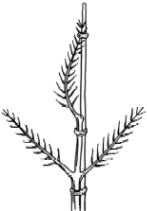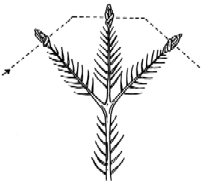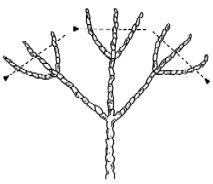Pruning evergreens
Evergreens or conifers require little formative pruning. They should be pruned only enough to
encourage bushy growth and maintain their natural shape, especially species that grow quickly or tend
to become straggly.
Unlike deciduous trees, evergreens do not readily produce new shoots on old wood. This
means that pruning should be limited to new wood, and should not be too heavy. Only Canada yew
and hemlock tolerate pruning of old wood.
Maintenance pruning
- Remove any dead or diseased branches.
- Maintain a well-defined leader or main stem for upright or pyramidal
needle-bearing evergreens (spruce, fir, etc.).
- Remove one third of the new shoots on pines before the needles appear in order to slow
the plant's growth and make it bushier (e.g. mugho pine).
- Cut back the new shoots on scale-bearing evergreens (cedar, juniper, etc.)
by one third to one half in order to emphasize their conical shape and make them bushier.
 |
 |
 |
Maintaining a well-defined
leader for upright needle-bearing | Pruning a pine | Pruning a cedar |
When to prune
 Maintenance pruning: year-round except for new shoots: June is ideal.
Maintenance pruning: year-round except for new shoots: June is ideal.
|